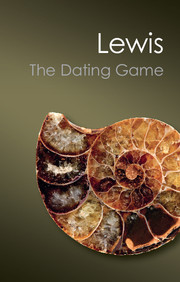Book contents
- Frontmatter
- Contents
- List of Illustrations
- Prelude to the Game
- A Brief History of Time
- Darwin's Sorest Trouble
- Mysterious Rays
- Doomsday Postponed
- Holidays in Mozambique
- This Vegetable Prison
- A Brimful of Promise
- Liquid Gold in Yenangyaung
- Durham Days
- The Ardnamurchan Affair
- Rewards and Retributions
- Why does the Sun Shine?
- The Age of Uranium
- The Age of the Earth
- Loose Ends
- Thanks and Acknowledgements
- Selected Bibliography
- Index
- Frontmatter
- Contents
- List of Illustrations
- Prelude to the Game
- A Brief History of Time
- Darwin's Sorest Trouble
- Mysterious Rays
- Doomsday Postponed
- Holidays in Mozambique
- This Vegetable Prison
- A Brimful of Promise
- Liquid Gold in Yenangyaung
- Durham Days
- The Ardnamurchan Affair
- Rewards and Retributions
- Why does the Sun Shine?
- The Age of Uranium
- The Age of the Earth
- Loose Ends
- Thanks and Acknowledgements
- Selected Bibliography
- Index
Summary
If one is sufficiently lavish with time, everything possible happens.
HerodotusBack in 1913 Arthur Holmes, then a young man of twenty-three, had just published his first book on The Age of the Earth. While writing it he had come across a theory with regard to formation of the Earth recently put forward by an American geologist, Thomas Chamberlin, who considered that the Earth had been created by the accumulation of cold solid particles which Chamberlin called ‘planetesimals’. In Holmes' mind the most important feature of the Planetesimal Hypothesis was that Chamberlin rejected the assumption shared by Kelvin and other scientists that the Earth had begun as a molten globe. Instead, Chamberlin proposed that although heat would initially be generated by planetesimals falling into the Earth as it consolidated, during the later stages that heat would be dissipated into space leaving the Earth a cold and solid body. The particular attraction of this theory for Holmes was that it discredited Kelvin's arguments in favour of a cooling globe and a very restricted geological time scale.
Thrilled that someone else shared his views of an ancient Earth, Holmes wrote to Chamberlin in 1912 to tell him ‘how much your work on cosmogenic geology and causal processes has inspired me in my geological work. You have done more probably than any other living geologist to clothe the dry bones of geological fact with the fascination of co-ordinating theories’.
- Type
- Chapter
- Information
- The Dating GameOne Man's Search for the Age of the Earth, pp. 217 - 228Publisher: Cambridge University PressPrint publication year: 2012



